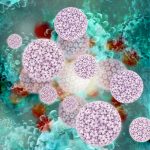Study: Rituximab Better Than MMF, Azathioprine in Preventing Relapses

Rituximab worked better than other treatments at preventing relapses in people with neuromyelitis optica spectrum disorder (NMOSD) who have antibodies against aquaporin-4 (AQP-4), according to a recent Chinese report.
As a first-line therapy for the autoimmune disease, Rituximab outperformed both azathioprine and mycophenolate mofetil (MMF) in relapse prevention, the analysis showed.
Notably, while most reported treatment side effects were mild or moderate in severity, azathioprine was associated with a higher incidence of adverse events compared with rituximab or MMF.
“[Rituximab] is superior to AZA [azathioprine] and MMF as [an] initial treatment to reduce the risk of relapse,” the researchers wrote, adding that it is “better tolerated than AZA in Chinese patients with AQP4 antibody-positive NMOSD.”
The study, “Efficacy and safety of azathioprine, mycophenolate mofetil and reduced dose of rituximab in neuromyelitis optica spectrum disorder,” was published in the European Journal of Neurology.
Delaying or preventing disease attacks is the primary goal of NMOSD treatment. Azathioprine, MMF (sold as CellCept) and rituximab (sold as Rituxan and others) are three commonly prescribed treatments for this purpose. But according to researchers, “data regarding the efficacy and safety of currently widely available preventive therapies … are needed.”
To explore which treatment may be the most effective at preventing relapses, the team retrospectively evaluated the safety and efficacy of the three therapies among 353 NMOSD patients who were treated at several centers across China.
In most NMOSD cases — about 70% — patients have antibodies against AQP4, a water channel protein, that are thought to contribute to the disease. All participants in this study had anti-AQP4 antibodies.
Overall, as a first-line treatment, 167 received azathioprine, 131 were prescribed MMF, and 55 were given rituximab.
Baseline characteristics between the three groups were similar, with most patients being female (84.7–94.5% per group). Patients in the rituximab group had a younger age of disease onset — 29 years compared with 37.5 for azathioprine and 38.5 for MMF — and also were less often receiving concurrent corticosteroid treatment.
Azathioprine and MMF were given as oral therapies. Azathioprine was taken as a 50 mg tablet two to three times per day. MMF was given at a dose of 500–1,000 mg twice per day.
An intravenous or into-the-vein therapy, rituximab was delivered at 100 mg on day one, followed by 500 mg on day two. A 500 mg infusion then was scheduled for once every six months thereafter. This is a lower dose than has been evaluated in previous studies, the team noted.
Regarding the dosage, the researchers noted that studies of rituximab in NMOSD have not used consistent regimens, and many implemented strategies used for treating lymphoma. “This reduced dosage regimen,” they wrote, “has advantages in terms of cost as well as balancing efficacy and safety.”
The treatments’ safety and efficacy were monitored over a median follow-up time of 30.3 months (about 2.5 years). Of note, the median follow-up time in the azathioprine group was longer than in the other two groups (41.3 months; about 3.5 years).
Among all participants, the one-year relapse-free rate was 89.3%, and the three-year relapse-free rate was 71.4%. Annual relapse rates declined significantly in all three groups. Specifically, relapses declined by 93.1% with azathioprine, 92.2% with MMF, and 95.6% with rituximab.
In a statistical analysis accounting for factors such as age at disease onset, sex, relapse rate before treatment, and disease duration, the results showed that rituximab significantly lowered the risk of relapse compared with the other two treatments.
No significant changes in disability, as measured with the Expanded Disability Status Scale (EDSS), were observed in the rituximab group, with slight increases — indicating worsening disability — observed in the other two groups.
Throughout follow-up, 56.6% of people maintained their treatment’s use. Compared with rituximab, azathioprine-treated patients were more likely to stop treatment. Overall, the most common reason for stopping treatment was the occurrence of adverse events (19.2%). Other reasons included fear of side effects (14.4%), breakthrough relapses (8.2%), cost (5.9%), and a wish to become pregnant (1.1%).
More patients in the azathioprine group reported adverse events than in the other two groups. Consistently, adverse events were the most common reason for stopping treatment in that group (39.7%), whereas reasons other than adverse events or relapses were the most common among rituximab (28.2%) and MMF (22.2%) patients.
Most reported adverse events were mild or moderate. Patients who received azathioprine were more likely to have low white blood cell (immune cell) counts than in the other two groups, whereas increased levels of liver enzymes and hair loss were more likely with azathioprine or MMF compared with rituximab.
Azathioprine-induced changes in low white-cell counts are known to be higher among Asians than Caucasians, and this finding may not be generalizable across all ethnicities, the team noted.
The incidence of infections was not statistically different across the three groups: 9.1% for rituximab, 5.4% for azathioprine, and 3.1% for MMF. Similarly, severe infections were comparable: 5.5% for rituximab, 2.4% for azathioprine, and 0.8% for MMF. The most common types of infection in all patients were respiratory, urinary tract, and herpes zoster, all of which resolved with treatment.
Injection-related reactions were reported in 18.2% of rituximab-treated patients, all of which were transient and mild.
“In conclusion, our study provides … evidence that for patients with AQP4-antibody-positive NMOSD, [rituximab] is superior to AZA and MMF in delaying relapse and better tolerated than AZA,” the researchers wrote.







